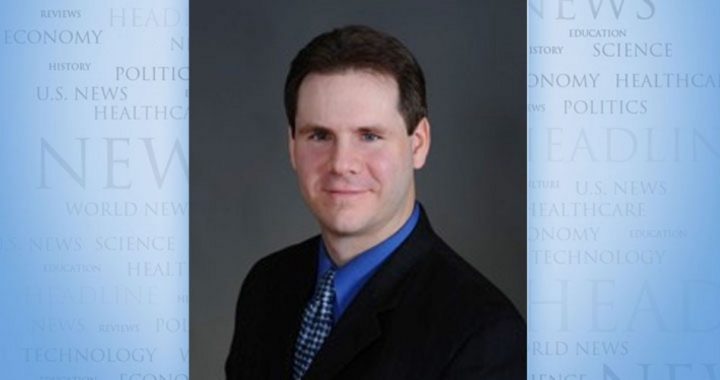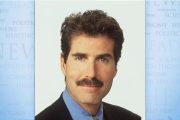
World population did not explode “because people started breeding like rabbits,” American Enterprise Institute scholar Nicholas Eberstadt once noted, “but because they stopped dying like flies.” This truth reflects the reality that for most of history, life was generally tough and often brutal and short, fraught with serious risk. Today, though, we have a bubble-wrap mentality, and this is absolutely part of the reason why too many Americans are treating COVID-19 as if it’s an Omega Man situation.
So says the Federalist’s Kylee Zempel, addressing a question posed by the New York Times: “Why do so many vaccinated people remain fearful?” (Looking in the mirror would give the Times part of the answer.)
The Times writer David Leonhardt opens with the following story:
Guido Calabresi, a federal judge and Yale law professor, invented a little fable that he has been telling law students for more than three decades.
He tells the students to imagine a god coming forth to offer society a wondrous invention that would improve everyday life in almost every way. It would allow people to spend more time with friends and family, see new places and do jobs they otherwise could not do. But it would also come with a high cost. In exchange for bestowing this invention on society, the god would choose 1,000 young men and women and strike them dead.
Calabresi then asks: Would you take the deal? Almost invariably, the students say no. The professor then delivers the fable’s lesson: “What’s the difference between this and the automobile?”
(There’s a big difference, morally-speaking. For one thing, death resulting from proper auto use is what’s known in moral philosophy as “a negative unintended consequence of a morally licit action.” In Calabresi’s example, however, we’d be consciously agreeing to trade people’s lives for a benefit, which would make us complicit in murder.)
Leonhardt’s point is that people accept long-existing risks; they’re used to them. Yet, “One way for a risk to become salient is for it to be new,” he writes. He points out that car crashes kill far more than 1,000 young people, claiming approximately 40,000 lives yearly. It’s all part of man’s irrationality regarding risk, Leonhardt states, as we ignore major threats while fixating on minor but scary ones such as shark attacks or plane crashes.
Yet while Leonhardt’s assessment is partially true, there’s more to it, asserts Zempel. The “fact is that vehicles, which have always been risky, do exist, meaning that Americans at one point were willing to take that risk,” she writes. “Thus the explanation can’t just be that we assign different treatments to ‘new risks and enduring ones.’ It’s that Americans of today are orders of magnitude more risk-averse than our predecessors, and thus are more paralyzed and less productive.”
Zempel also takes issue with Leonhardt’s claim that for even vaccinated people, coronavirus fear is “natural” and overcoming it is “psychologically hard.” She says that irrational fears surrounding SARS-CoV-2 aren’t “natural” or solely attributable to the threat’s “salience” or newness; rather, they’ve been manufactured by COVID-panic-porn peddlers such as Dr. Anthony Fauci.
While people don’t have the sense of control with respect to a virus that they do when driving a car, Zempel is correct. How many Americans know, for example, that the CDC itself has told us that the China virus survivability rates for different age groups are as follows: 0-19, 99.997 percent; 20-49, 99.98 percent; and 50-69, 99.5 percent? Zempel is also right about how moderns have become fatally risk-averse.
For most of history, people lived (when they did live) with high infant-mortality rates, a notable number of women dying during childbirth, and kids being claimed by diseases we now readily treat. They had to accept realities, such as droughts and other natural phenomena that could prevent crop growth and lead to their families’ starvation. Or maybe their sword of Damocles was that barbarians could at any time raid their village, rape the women, and kill their loved ones.
In fact, I once read that the average lifespan in the Roman Empire was 22 (of course, there were still people living into old age); until relatively recently, warfare, disease, and disaster were man’s continual companions. Great risk was simply part of life.
But modernity has changed all that, and people today have infinitely higher expectations for safety — often unrealistic expectations. Why, we practically ensconce our kids in bubble wrap as we stifle all and sundry with prescriptions, regulations, and nanny-state nagging.
Part of this, no doubt, is spiritual. People in medieval Europe, for instance, were quite God-centered and looked forward to Heaven’s glory. This was, most likely, as much as effect of their risky existences as it was a cause of their acceptance of that risk. After all, “Pain is the megaphone God uses to get through to deaf ears,” to paraphrase C.S. Lewis. Those greatly imperiled in this world are more likely to look to the next.
Today’s rampant atheism creates a very different mentality. When people don’t believe in an afterlife, they can perhaps become paranoid about staying in this life as long as possible. Oh, don’t misunderstand me, “Everybody wants to go to Heaven, but nobody wants to die” as the saying goes. Yet there’s little doubt that much of our current bubble-wrap mentality is attributable to the inordinate fear of death atheism can breed.
But often overlooked is that there are risks associated with trying too hard to avoid risks. Consider COVID: Many of the well-intentioned among us surely believed that lockdowns were prudent. Even if they did prevent China virus deaths, however (and studies indicate otherwise), what about the mortality they cause by way of suicide, drug and alcohol abuse, and domestic abuse? What about people’s lockdown-induced neglect of medical care such as heart-disease and cancer screenings?
Note here one study finding that the lockdowns in South Africa caused 29 times as much death as the pandemic alone would have.
So to use a variation on a line from famed French economist Frédéric Bastiat, a bad analyst observes only what can be seen; a good analyst observes what can be seen and what must be foreseen.
Sadly, there aren’t enough good analysts in government — there also are too few good people there. Of course, call me crazy, but spiritual factors could explain that, too.



